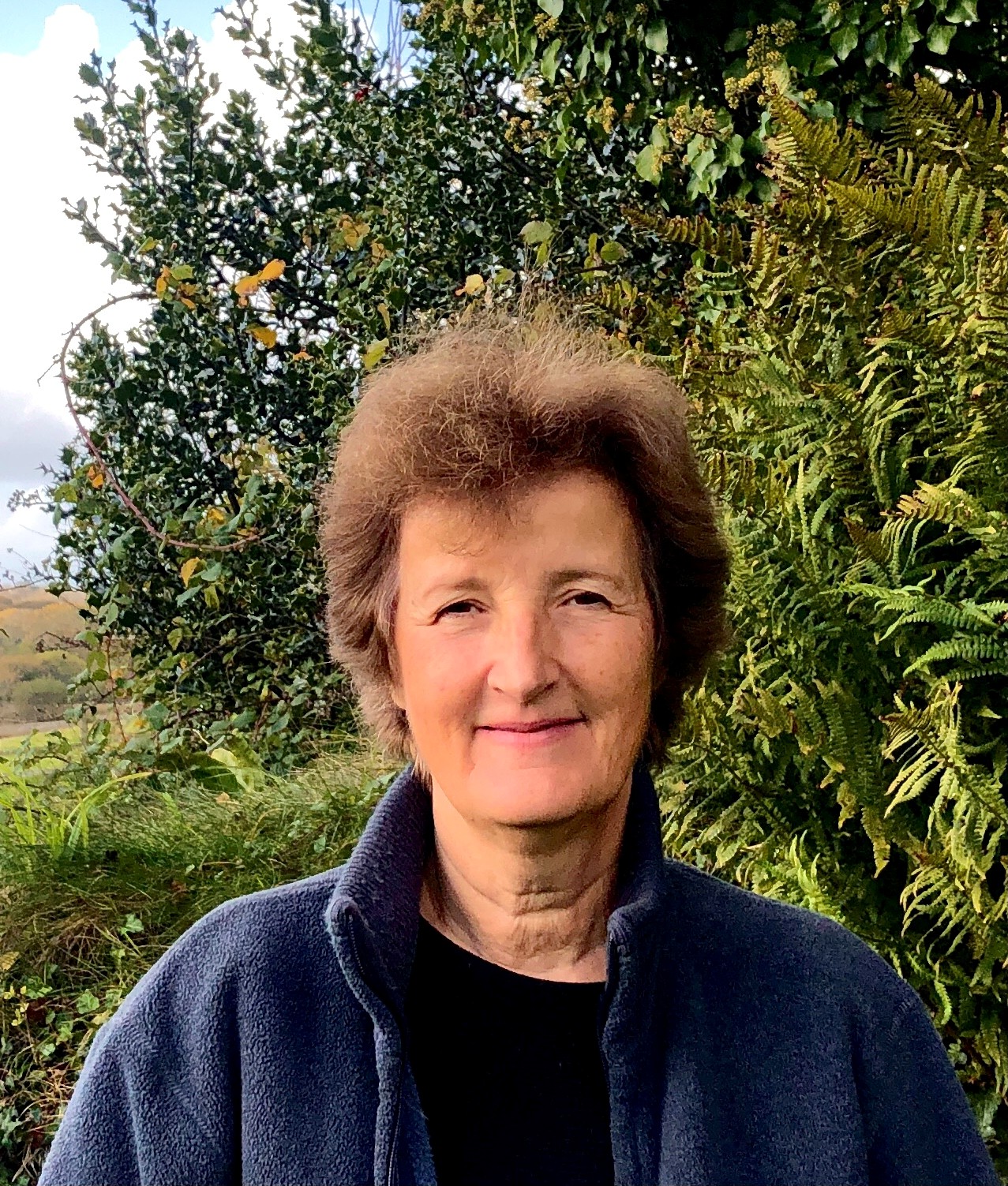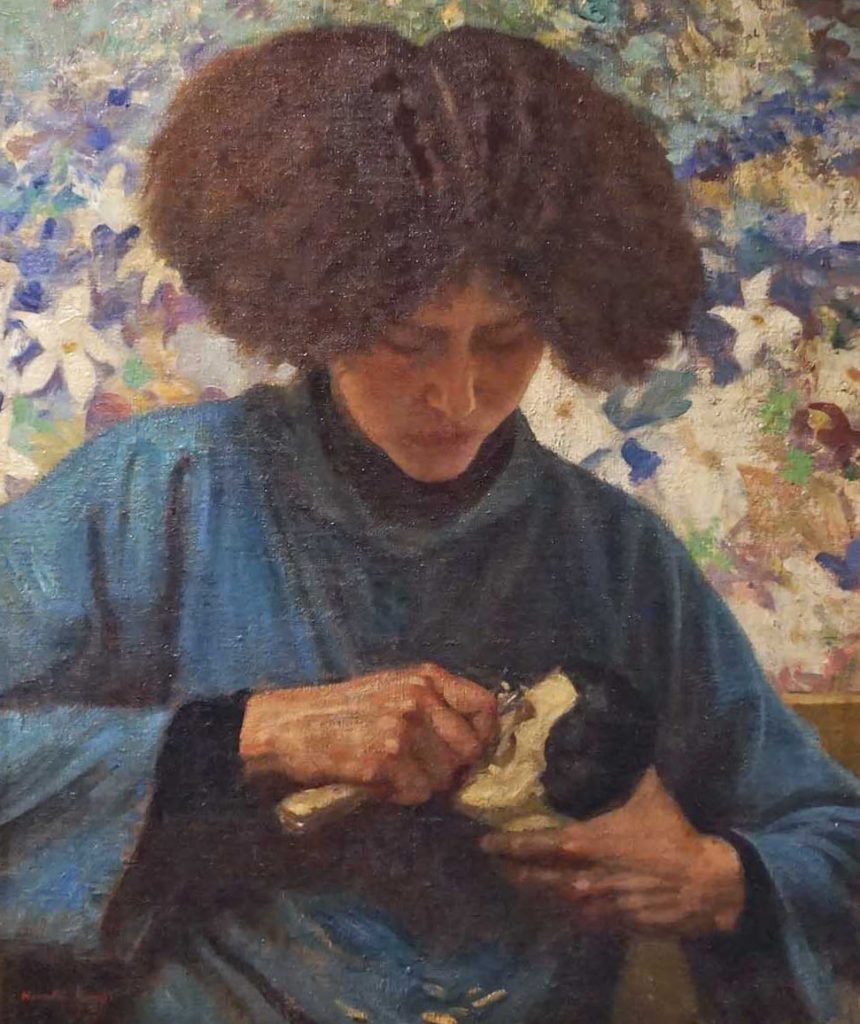
Home » Latest News » Harold Knight’s Portrait of Phyllis ‘Pog’ Yglesias (1892-1977) by Catherine Wallace
Laura Knight gives the best description of Phyllis Yglesias, known as Pog, in her first autobiography as “our joy and delight, a wild young thing of imagination, wit and great talent, a Basque.” Harold Knight’s colourful portrait of Pog in Penlee’s collection completes this description of their friend. An artist herself, Pog was known as a sculptor and creator of toys made from wood such as the puppet’s head she is shown carving in the portrait. Phyllis did have, as Laura Knight implies, Spanish ancestry as her grandfather Miguel Joaquin Yglesias was a Spanish wine merchant, who married an English woman Sarah Elizabeth Evans in London on 9 September 1837. Phyllis was the daughter of one of their children Vincent Philip Yglesias, who became a landscape painter and was associated with the Walberswick art colony.
But it was another art colony by the sea in Lamorna that, after Vincent’s death, the family discovered when they arrived in 1912.This is when the Knights would first have encountered Phyllis. When Laura returned to Lamorna in 1918 to try and compete her War commissioned painting of the ‘Boxing Contest’, the Knights camped out in Laura’s Studio on the cliffs. Laura goes on to describe how Phyllis would come over from Mousehole where she lived with her sister, and sleep in the lean-to on a camp bed or sometimes she would just sleep on “the bare earth”.
My feeling is this portrait was probably painted in Laura’s studio as the background looks like a part of one of her paintings with flowers in the foreground.
Harold’s portrait also captures Pog’s wiry strong physique, as Laura put it,“She was feather-weight, but what there was of her was all nerve and muscle.”
Phyllis was to go on to dedicate the rest of her life rescuing sea birds and established the Mousehole Wild Sea Bird Hospital in 1928 with her sister Dorothy. Penlee House also has a series of sketches, some wooden puppets and two carvings by Phyllis in its collection but the best example of her woodcarving can be seen in St. Hilary’s Church in the form of a life size crucifix.

The Friends of Penlee House is a registered charity (No: 1206841), the object of which is to support the aims and activities of Penlee House Gallery and Museum, home to the county’s best known collection of work by artists of the Newlyn School.